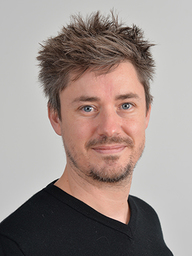| Dr Fabrice Caudron (Lecturer in Microbiology, Nanchang Joint Programme, Queen Mary, University of London) |
| Thu 26 Sep 2019, 12:00 - 13:00 |
| C.H Waddington Building, Seminar room 1.08, King's Building's |
If you have a question about this talk, please contact: Julie Fyffe (jfyffe)

Budding yeast cells can escape pheromone induced cell cycle arrest through super-assembly of the G1/S inhibitor Whi3. Strikingly, Whi3 super-assemblies are retained in the mother cells, lending Whi3 the property of a mnemon (Whi3mnem) as opposed to prions. I will present our data addressing the mechanism of asymmetric inheritance of Whi3mnem. We found that Whi3mnem is closely associated with endoplasmic reticulum membranes and that this attachment and the presence of lateral membrane diffusion barriers at the bud neck promote the retention of Whi3mnem in the mother cell. We discovered that some mnemons can become prions in the absence of diffusion barriers and I will link this to cellular ageing. Overall, I will argue that membrane compartmentalisation by diffusion barriers and interaction of protein super-assemblies with membranes dictate the spatial control the cell imposes of such assemblies. These mechanisms are probably fundamental players in cellular adaptation across most organisms which form membrane-less organelles.


